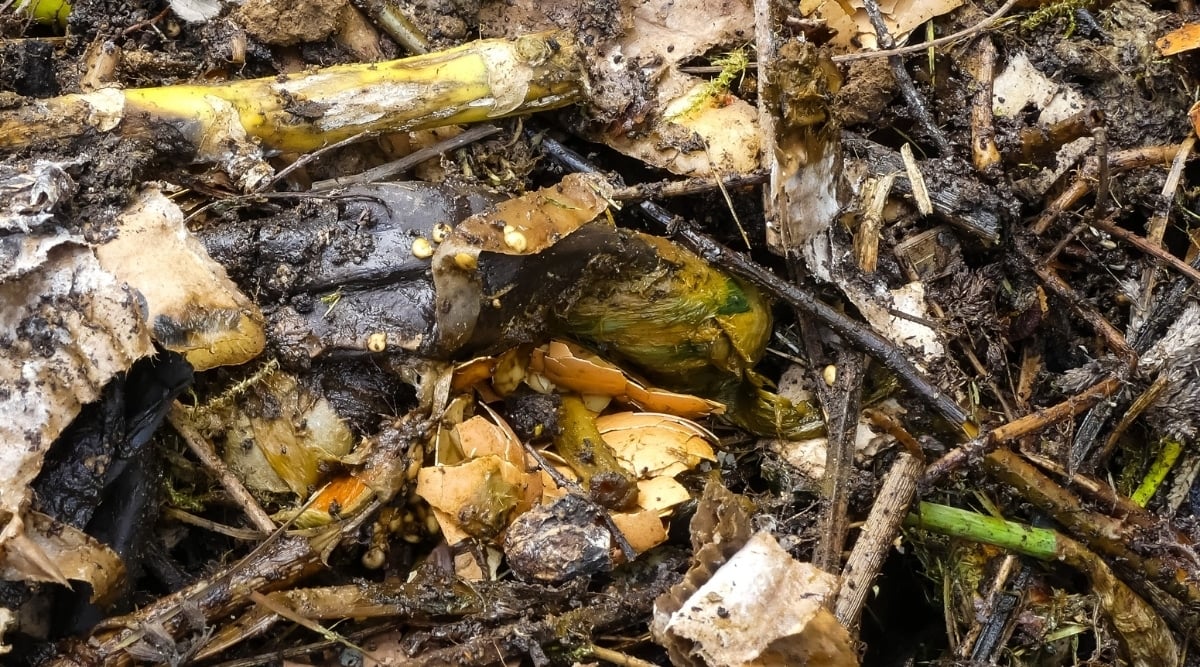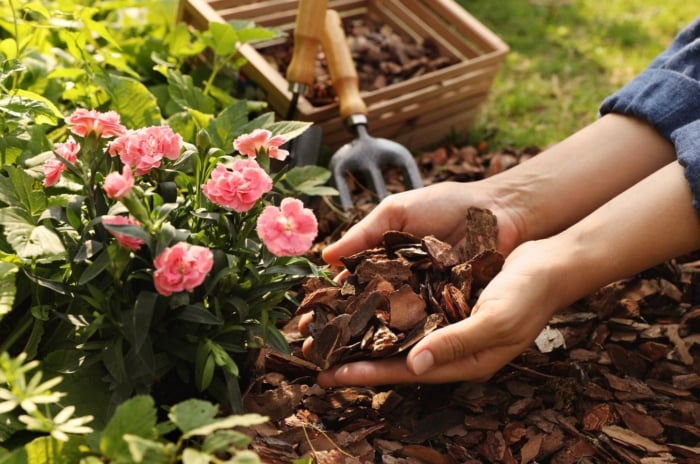Best Organic Mulches For Vegetable Gardens: Natural Choices For Your Home Garden
Are you starting an organic vegetable garden in your home, but aren't sure what mulches you should use when you begin? Using the right mulch can ensure that your garden is off to a great start. In this article, organic gardening expert Logan Hailey breaks down the best types of mulches you should use in an organic vegetable garden.

Contents
Whether you’re looking to suppress weeds, water your garden less, or improve your soil, mulch is a gardener’s best friend. Mulches make our lives easier by cutting down on time spent weeding and watering while simultaneously helping us grow healthier, happier plants.
If you are just starting out, and aren’t sure what kind of mulch to use for your veggies, you may be a bit confused due to the sheer amount of options you have available. The good news is, with an organic mulch, there are options you can create yourself, rather than just purchasing something from a store.
Ready to learn a little bit more? Let’s dig into the benefits of mulching and the best organic mulches for vegetable gardens!
Don’t Garden Naked! The Problem with Bare Soil

A key goal of sustainable farming and gardening is to never leave the soil naked. Everywhere we look in nature, the soil is covered. It is difficult to find exposed soil in forests or grasslands because the soil is protected by mulch! This is one of several important organic gardening tips we make sure to cover for aspiring gardeners.
This layer of decaying leaves, wood, and other once-living things is actually what fuels soil cycles to grow everything from massive redwood forests to little garden plots of lettuce.
If we leave the soil bare, nature fills it in by her own accord. She grows weeds or crusts over the surface to try to protect the fragile ecosystems underneath.
Bare soil poses many problems for the vegetable gardener, including:
- Weeds weeds weeds! There is nothing to smother them.
- The soil dries out quicker and needs more irrigation.
- Wind and water erosion take soil out of our gardens.
- Bare soil leads to more temperature fluctuations because the soil gets hot and cold easily without any insulation. Garden plants prefer as much consistency as possible.
- The impact of heavy rain compacts unprotected soil, leading to a harder soil surface.
What is Mulch?

Mulch is a biodegradable material added on top of garden beds to cover the soil. It acts like a blanket over the soil surface and around the base of your plants.
Mulch offers a host of benefits to both the plants and the gardener! Using mulch helps us mimic natural ecosystems and nurture the soil for a healthier garden. Not to mention, it makes our work as gardeners so much easier.
Benefits of Mulching

Suppress Weeds
Mulch smothers weeds by preventing them from reaching sunlight. Mulches are typically tucked up against crop plants and blanket the soil between plants to outcompete weeds and grasses.
Conserve Moisture (Less Irrigation)
Have you ever dug your hand down beneath the leafy mulch of a forest? It’s almost always moist under there. Mulches protect the soil from drying out and conserve moisture for our plants to use. This means less irrigation and more resilience to drought.
Protects Soil Surface (Less Erosion)
Erosion from wind and rain are the main causes of soil loss globally. Naked soil easily blows away or compacts down from the impact of water. A mulch blankets and protects soil so it stays in your garden where you want it.
Plant Root Insulation
Mulch keeps plant roots protected from temperature extremes. They act as insulation against both hot and cold weather. Many gardeners use heavy mulches like straw to overwinter strawberries, roses, and other perennials in colder climates.
Improves Soil Structure
As they break down, mulches feed soil microbes over time. All those bugs and microorganisms build structure in the soil that makes it easier for vegetable roots to reach down and find nutrients and water.
Adds Organic Matter to the Soil
Organic matter becomes that rich dark-colored humus that we all recognize in super healthy soil. Mulches are degraded by fungi and bacteria, fueling the soil food web and building organic matter in your garden.
Higher soil organic matter levels improve water holding capacity, root penetration, plant nutrition, and soil drainage.
Top 9 Best Types of Organic Mulches
Compost

Compost is an incredible mulch to build soil tilth and suppress weeds. It’s one of the cheapest solutions for your garden, and it works great with vegetable gardens, including perrenial veggies. You can use it when establishing your garden and add a 1-4” layer thick every season to continue building soil from the top-down. If you sieve your compost through a 1-2” hardware cloth, the fine texture will make a perfect mulch for directly seeding into.
Compost is rich decomposed organic materials that have been properly aerated and broken down in a compost bin or pile. The ratio of “brown” carbon-rich materials and “green” nitrogen-rich materials will determine the quality of the end product. Dr. Elaine Ingham of Soil Food Web Inc. recommends 10% high nitrogen material (like manure), 30% green materials (kitchen waste or plant residues) and 60% brown materials (leaves, wood chips, straw).
You can buy compost or make your own. You can eaven make compost out of citrus, and other material you may not be aware of. Either way, be sure it is fully broken down (no visible food scraps), not hot (still “cooking”), weed-free (reached a hot enough temperature in the composting process), and not contaminated with any herbicides.
Wood Chips

Wood chips are an excellent mulch for pathways as well as perennial garden beds and areas around shrubs or fruit trees. Woody mulches are carbon-rich, so they break down very slowly. This makes them great for weed suppression but not as great for annual vegetable beds that are replanted several times a year.
Be very careful when purchasing bags of wood chips or bark from big box garden stores, as many standard landscaping mulches are treated with harmful chemicals and artificial coloring. The best source for wood chips is a local arborist, who will gladly dump a load of wood chips near your garden after pruning or cutting nearby trees.
Use wood chips to mulch your pathways between garden beds (they’ll help cut down on slug and tick populations) and around woody plants. A wood-chipped walkway keeps harvest baskets and garden boots cleaner. This will also keep your garden from getting too muddy during the rainy months.
Leaves

In the autumn, you will often find me raking and collecting leaves into bags anywhere I can find them. Fallen leaves are one of the best vegetable garden mulches.
They are thick enough to provide great weed suppression, but they also break down in one season and enrich the upper layer of soil with an array of beneficial nutrients. You can also easily shred them up with a lawnmower or turn them into the soil to make them break down more quickly.
You will want to choose deciduous (broadleaves) that fall in the autumn, and avoid coniferous (or evergreen) leaves like pine needles because they are very acidic and have less surface area. Maple leaves are my favorite because of their broad flat surface to suppress weeds and wide availability.
Straw

Straw and hay bales are common autumn decorations with many uses on farms and gardens. When mulching, it is important to differentiate between the two. Both are dried grasses, but they are harvested at different times.
Hay is harvested as animal feed. Farmers usually allow the grass to go to seed so there are more nutrients for the animals. But you definitely don’t want hayseeds in your garden or you will end up growing grass instead of a vegetable garden.
Straw is harvested for non-food purposes like mulching and animal bedding. It is made up of dryer plant stalks that are harvested after the hay has already been bailed. Straw is typically seed-free, which is why it is a great mulch.
Straw is a great mulch for winter squash, pumpkins, cucumbers, herbs, perennials, and pathways.
It is just super important to check that your straw bales have not been sprayed with herbicides, which is unfortunately very common as part of grass and grain harvests. Herbicide residues in straw bales won’t only damage your garden plants, but could potentially expose your family to toxic chemicals (which you surely don’t want as an organic gardener).
Newspaper

Newspaper is a cheap and accessible garden mulch that suppresses weeds and grass like no other. Critters like earthworms also love to make their homes under this moist mulch and enrich the soil beneath with their droppings.
Standard thin newspapers use soy-based ink and are 100% biodegradable, as long as you are avoiding any laminated or shiny magazine-like pages.
Newspaper is great for establishing gardens and can be laid down five layers thick or more. You will want to dampen it and cover it with compost or topsoil to avoid paper blowing away. It is also great for walkways. I wouldn’t recommend mulching it around already planted vegetables.
Cardboard

Cardboard can be used similarly to newspaper, just be sure that you remove all the tape! Laying down cardboard mulch to establish a garden or kill existing grass is sometimes called “sheet mulching.”
Cardboard lasts longer than newspaper and really keeps the weeds down. It also slowly enriches the soil and makes for great footpaths. You can layer other mulches like compost, wood chips, or straw on top of cardboard to keep it from blowing away.
Grass Clippings

Putting grass clippings into yard waste bins is an unfortunate waste! That is green gold you could be using in your garden! Grass clippings are a nitrogen-rich plant food that breaks down quickly and can be mulched around young tomatoes, lettuces, and other veggies.
Because grass can go anaerobic and start to smell funky, you should not layer grass clippings any deeper than 3”. Better yet, you can use the clippings in your compost pile first and then use them as a finished compost mulch.
You will want to be 100% certain that your grass has not been treated with any synthetic fertilizers or sprayed with synthetic herbicides like RoundUp, as this will damage your garden and potentially your health.
Cover Crop Residue

Cover crops are plants like some pea varieties and oats grown to enrich the soil and keep vacant garden plots covered during the off-season. They are also a great placeholder for empty garden beds that you don’t plan to grow in during a particular season. Cover crops suppress weeds, feed soil microbes, and – once terminated – can be a great mulch!
The key to mulching with cover crop residue is terminating them before they set seed. You can do this with a lawnmower, a weed whacker, or a scythe. My favorite summer cover crop is phacelia (a beautiful purple flower that bees love). It will die back at the first frost and leave behind a lovely fluffy mulch on your garden surface.
Living Mulch

A living mulch is the most eco-friendly permaculture-type method for mulching a garden. Living mulches are low-growing companion plants that grow between your crops without competing with them. One of my favorites is creeping thyme (not the bushy stand-up kind). Creeping thyme can be sown beneath strawberries, pumpkins, winter squash, or melons and will provide a lovely clean surface for fruit to rest on.
You can also use direct-seeded leafy lettuce as a living mulch between larger veggies like broccoli and cabbage.
Final Thoughts
Whatever mulch you choose, apply it at least once per season to keep the soil covered, cut down on water use, and smother those pesky weeds. Mulches support healthier plants that yield more with less labor. Happy gardening!









